A dairy barn in Waitfield, Vermont, built around 1890. Thomas Wisser, CC BY-ND

Curious children A series for children of all ages.If you have a question you would like an expert to answer, please send it to curiouskidsus@theconversation.com..
Why is the barn painted red? – Elijah B., 13 years old, Waverly, TN
There are three reasons why there are so many red barns in the United States. It’s traditional, practical, and looks pretty in color.
The main reason for painting wooden buildings is appearance, but painting protects the wood and makes it last longer.
From the 1700s to the early 1800s, barns on family farms in the northeastern United States were usually covered with thick vertical plates. When they were left unpainted, the boards slowly weathered to brownish gray.
However, since the mid-1800s, in order to improve barn efficiency by reducing drafts and keeping winter animals more comfortable, many farmers have barned wooden clapboards horizontally nailed to the barn’s outer walls. I tightened. These clapboards were very thinly sawed, so painting them provided the necessary protection and dressed up the barn look.
People are also reading …
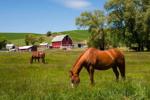
Horses are grazing on a farm near Pullman, Washington. Wolfgang Koehler / Light Rocket via Getty Images
In the 1800s, it was common to mix pigments with flaxseed oil made from flaxseed and other ingredients to make your own paints. Pigments are dry materials that add color.They were available in a variety of colors, but the shades commonly found in old American barns were called. Venetian red..
“According to the 1884 editionEveryone’s paint bookAccording to FB Gardner, Venetian Red was “suitable for general work, or brickwork or annexes.” This red pigment penetrates well into wooden barn boards and resists fading when exposed to sunlight, so it can age gracefully for generations.
The name Venetian Red comes from the fact that this pigment was historically made from natural clay found near Venice, Italy. The clay contained an iron oxide compound that produced this red color.

Details from a barn in Grafton, Vermont. John Graeme / Light Rocket via Getty Images
However, similar iron oxide deposits were found in many other places, making “Venetian Red” a generic term for pale red pigments with no purplish tint. By the 1920s, such “earth pigments” used to make red paint were dug in Georgia, Pennsylvania, Virginia, Alabama, California, Iowa, and Vermont.
By the late 1800s, in addition to red, it was popular to paint barns with other color schemes, especially those designed to complement the architectural style and finish of the owner’s home. These included different shades of yellow, green and brown. Also, barns and homes were generally painted white.

Released on January 24, 2021, these stamps show a round barn surrounded by dim light and warm autumn colors. Summer mansard roof barn. A barn in Maewan in the countryside in early spring. And on winter nights, a western barn. Artwork by Kim Johnson, USPS, CC BY-ND
However, red paint was popular on many farms because it was the most affordable. In 1922 Sears, Lowback Catalog Red barn paint was offered for only $ 1.43 per gallon, while other color house paints sold for at least $ 2.25 per gallon. This is almost double.
Today, many modern barns do not resemble the classic version. A very large barn with hundreds of cows and pigs looks like a hangar or warehouse. metallic.. However, the tradition of painting small barns red — is so powerful that the United States Postal Service is now celebrating the barns red. stamp..
Hello, curious kids! Do you have a question that you would like an expert to answer?Ask an adult to ask a question CuriousKidsUS@theconversation.com.. Please tell us your name, age and city of residence.
And since there is no age limit for curiosity, even adults, please tell us what you are wondering about. Not all questions can be answered, but we will do our best.
This article will be republished from conversation Under a Creative Commons license.
Thomas Durand Wisser receives grants and contract funds from the National Endowment for the Arts. National Park Service; Ministry of the Navy, Navy Facility Engineering Command; Museum Service Organization, managed by the Foundation of the American Institute for the Preservation of Historical and Artistic Works. Vermont State Capitol; Vermont Conservation Trust. He has a contract with the United States Postal Service, Photoassist, Inc. Provided technical assistance to. He is currently a member of the American Institute for the Preservation of Historical Arts (AIC). International Conservation Technology Association; National Trust for Historic Preservation, Preservation Forum; Heritage Canada; International Council on Monuments and Sites / American Commission; Important Heritage Research Association; American Alliance of Museums.
Your best art and architecture photos from the destination photo contest
Palace of Fine Arts
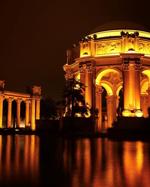
San Francisco (Photo: Chelsea Cardenas)
Grand Canal Venice
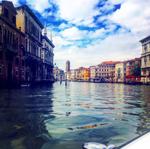
Travel to Italy in May 2017 (Photo: Pamela Barton)
Limerick Ireland

Wall art Nicolas St Limerick (Photo: RICHARD DORROUGH)
Havana night
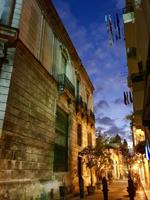
Beginning of a night adventure in Havana, Cuba (Photo: Sarah Mahwald)
Santorini in the Aegean Sea
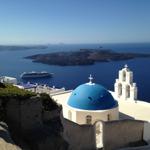
Stopover of your favorite Mediterranean cruise (Photo: Martin Seelye)
Wat Phra That Doi Suthep

The 309 climbs a very unique and crowded staircase to reach the summit. Beautiful buildings, temples and stunning views of Chiang Mai, Thailand await. (Photo: Jessica Mangold)
Where to go now

An abandoned fuel station in the Coast Range Mountains of Oregon. The place looks quiet, but has been screaming for years. (Photo: Nicholas Martin)
Let’s roll justice like a river
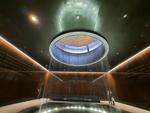
National Museum of African American History and Culture, Washington DC. Contemplation court. (Photo: Becky Anderson)
Abu Dhabi’s awe

My son, 12 years old, praises the magnificent architecture of the Sheikh Zayed Mosque in Abu Dhabi, United Arab Emirates (Photo: Suzanne Spadafora).
Gilding art
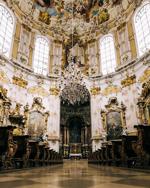
Inside the German cathedral. (Photo: Curly Hawkins)
Art Island, Naoshima, Japan
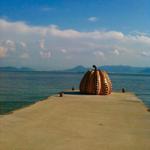
When you’re at the end of the dock, put the art down. (Photo: Bonnie Gemel)
Surprise windmill
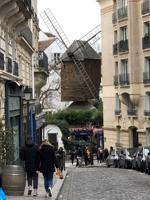
A side road near the Sacre Coeur in Paris (Photo: KENNA CHILDRESS)
Catalina Island
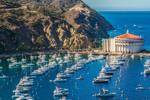
Island Life (Photo: Jamie Martin)
Shining dolphin

Puerto Vallarta Malecon, Jalisco, MX, sunset in November 2020 (Photo: Nikki Baldwin)
Roaring dragon

A show at the Performing Arts Center in Xiamen, China. (Photo: Shirley Unger)
Open your heart
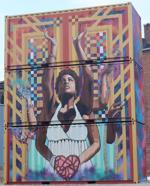
Spread love everywhere. (Photo: Lindsay Sadel)
Amsterdam art

During my vacation in Amsterdam, these rabbit statues were outside the museum. (Photo: Katie Kilpatrick)
Crazy hose!

Kate Lynn Person and Mary Bailey Person next to the artist’s production at the Crazy Horse Memorial (Photo: John Bailey)
Why is the barn painted red? | Lifestyle
Source link Why is the barn painted red? | Lifestyle
The post Why is the barn painted red? | Lifestyle appeared first on Illinois News Today.


No comments:
Post a Comment